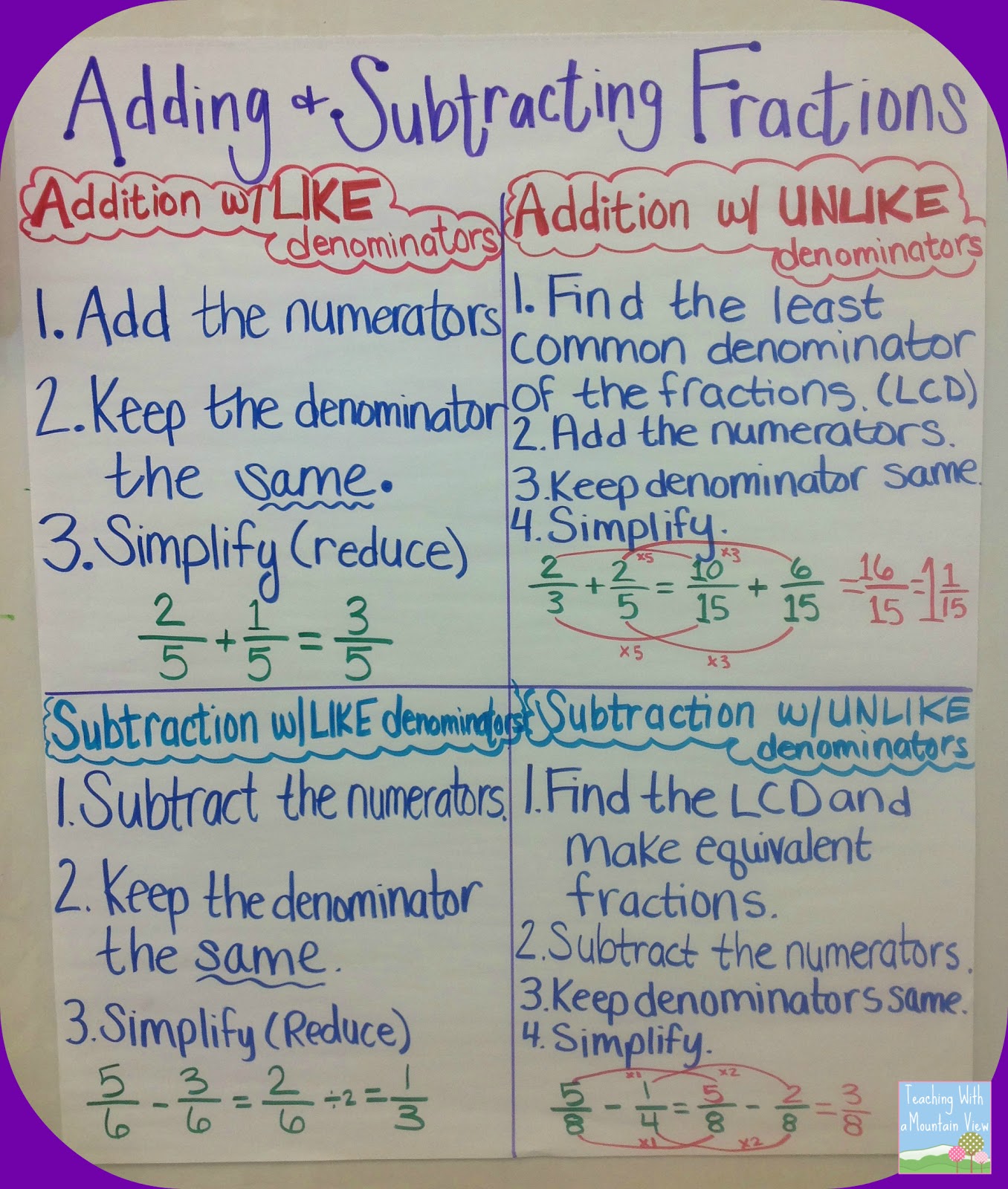Fraction Arithmetic: Conquer Adding and Subtracting Fractions
Ever felt lost in a maze of numerators and denominators? Fraction arithmetic can seem daunting, but understanding how to add and subtract fractions is a fundamental skill that opens doors to higher math and practical problem-solving in everyday life. This guide will break down the core concepts, offering clear explanations and helpful examples to make you a fraction whiz.
Adding and subtracting fractions is more than just a classroom exercise. It's a crucial tool for understanding proportions, ratios, and percentages, which are essential for tasks from cooking and baking to financial planning and engineering. Whether you're splitting a pizza with friends or calculating material costs for a project, knowing how to manipulate fractions is a game-changer.
The history of fractions traces back to ancient civilizations, including the Egyptians and Babylonians, who used them for practical measurements and calculations. Over time, the concept of fractions evolved, leading to the development of modern notation and techniques for fraction manipulation. The challenges of working with fractions, particularly when dealing with different denominators, spurred the development of methods like finding the least common denominator to streamline the process.
At its core, a fraction represents a part of a whole. The top number, the numerator, indicates how many parts you have, while the bottom number, the denominator, represents the total number of parts that make up the whole. The key to adding or subtracting fractions lies in ensuring they share a common denominator – the same bottom number. This common ground allows you to combine or separate the numerators effectively.
Imagine dividing a cake into eight equal slices. If you take three slices and your friend takes two, you've collectively taken five out of eight slices, represented as 5/8. This simple example demonstrates the practical application of fraction addition. The real-world implications of fraction arithmetic extend far beyond cake-cutting, impacting fields like science, technology, engineering, and mathematics (STEM).
A core concept in fraction manipulation is finding the least common denominator (LCD). This is the smallest multiple shared by the denominators of the fractions you're working with. By converting fractions to have the same LCD, addition and subtraction become straightforward operations on the numerators.
Benefits of Mastering Fraction Addition and Subtraction:
1. Enhanced Problem-Solving Skills: Adding and subtracting fractions equips you with the ability to tackle a wide range of real-world problems involving proportions, measurements, and distributions.
2. Foundation for Advanced Math: A solid grasp of fraction operations is essential for understanding more complex mathematical concepts like algebra, calculus, and statistics.
3. Improved Financial Literacy: From calculating budgets and discounts to understanding interest rates and loan payments, fraction skills empower you to make informed financial decisions.
Step-by-Step Guide for Adding and Subtracting Fractions:
1. Find the LCD of the fractions.
2. Convert each fraction to an equivalent fraction with the LCD as the denominator.
3. Add or subtract the numerators.
4. Simplify the resulting fraction, if possible.
Example: Adding 1/3 and 2/5. The LCD of 3 and 5 is 15. Convert 1/3 to 5/15 and 2/5 to 6/15. Add the numerators: 5 + 6 = 11. The result is 11/15.
Recommended Resource: Khan Academy
Advantages and Disadvantages of Fraction Calculations
| Advantages | Disadvantages |
|---|---|
| Precision in Representing Parts of a Whole | Can be complex with unlike denominators |
| Foundation for advanced math concepts | Potential for errors in finding common denominators |
Best Practices:
1. Always simplify your final answer.
2. Double-check your LCD calculations.
3. Practice regularly with varied examples.
4. Use visual aids like pie charts or fraction bars to understand the concepts better.
5. Seek help when needed – don't be afraid to ask questions.
Real-world Examples:
1. Cooking: Adjusting ingredient quantities in a recipe.
2. Construction: Calculating material lengths and dimensions.
3. Time Management: Tracking work hours or project timelines.
4. Finance: Calculating investment returns or loan payments.
5. Science: Measuring and mixing chemical solutions.
Challenges and Solutions:
1. Challenge: Finding the LCD. Solution: Use prime factorization.
2. Challenge: Dealing with mixed numbers. Solution: Convert them to improper fractions.
Frequently Asked Questions:
1. What is a fraction? A number that represents a part of a whole.
Tips and Tricks:
Use visual aids to reinforce your understanding.
In conclusion, mastering the art of adding and subtracting fractions is a pivotal step in your mathematical journey. It empowers you with practical problem-solving skills, lays the foundation for more advanced mathematical concepts, and opens doors to numerous real-world applications. From managing finances to pursuing STEM fields, the ability to confidently manipulate fractions is a valuable asset. While the initial learning curve may seem steep, with consistent practice and a clear understanding of the core principles, you can conquer fraction arithmetic and unlock its full potential. So, embrace the challenge, practice regularly, and discover the power and utility of fractions in everyday life. Don't let fractions be a stumbling block – let them be a stepping stone to greater mathematical fluency and understanding.
Decoding the rainbow what do different colored hearts really mean
Deconstructing the starbucks experience a look at coffee prices in the philippines
Decoding the magic of lift tech marine lift motors














